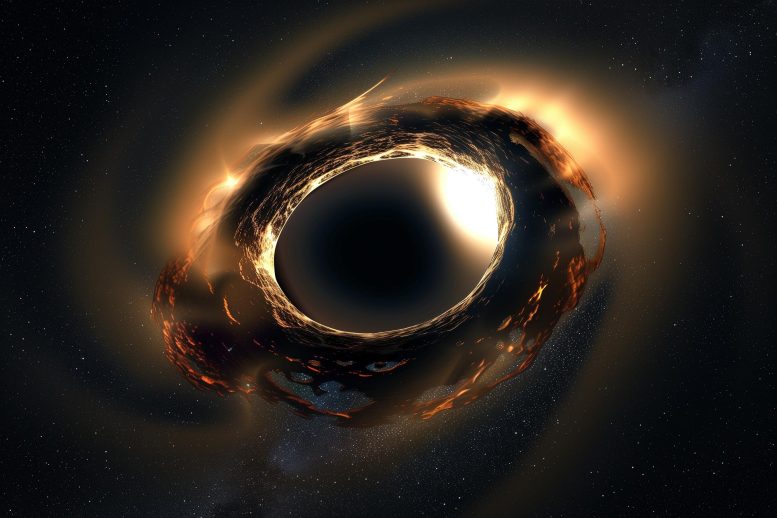
An international team has identified the heaviest black hole in our galaxy, with a mass 33 times that of the sun, using data from the Gaia spacecraft. (Artist’s concept.) Credit: SciTechDaily.com
Researchers utilizing the European Gaia spacecraft have discovered a black hole in a binary system, located 1,500 light-years away and weighing 33 times the mass of the sun, making it the heaviest known in the Milky Way.
The black hole, discovered using data from the European Gaia spacecraft, is more than three times heavier than the known black holes in our galaxy.
An international team of researchers, with the participation of researchers from Tel Aviv University (TAU) led by Prof. Tsevi Mazeh, discovered a star that orbits a black hole 33 times heavier than the sun’s mass, and lies 1500 light-years away from Earth. The black hole, discovered using data from the European Gaia spacecraft, is more than three times heavier than the other known black holes in our galaxy.
The Gaia spacecraft was launched by the European Space Agency in 2013 and has since then been regularly measuring the position and brightness of over a billion stars in our galaxy – the Milky Way galaxy – with unprecedented precision, equivalent to accurately determining the position of a single grain of sand on the moon to the millimeter.
An organization of hundreds of scientists across Europe processes the data coming in from the spacecraft and makes it accessible to the entire scientific community. The research group led by Prof. (emeritus) Tsevi Mazeh, from TAU’s Raymond and Beverly Sackler School of Physics and Astronomy, participates in the study of binary star systems discovered using the spacecraft data. The research was published in the prestigious journal Astronomy & Astrophysics.
This artist’s impression compares side-by-side three stellar black holes in our galaxy: Gaia BH1, Cygnus X-1, and Gaia BH3, whose masses are 10, 21, and 33 times that of the Sun respectively. Gaia BH3 is the most massive stellar black hole found to date in the Milky Way. The radii of the black holes are directly proportional to their masses, but note that the black holes themselves have not been directly imaged. Credit: ESO/M. Kornmesser
The large sample of binary stars should also include systems that include a black hole — one of the rarest celestial objects in the universe. The existence of a black hole is one of the most amazing phenomena in the universe, the existence of which was predicted by Einstein’s theory of general relativity back in 1939.
According to the accepted theory, when the fuel for the nuclear combustion process that takes place in the core of a star runs out, it collapses in on itself, towards its center. If the star is massive enough, all the remaining matter collapses into a single point of infinite density. It is possible, therefore, to see the black hole as the “corpse” of a star that has ended its life cycle and collapsed in on itself.
Astrophysicists are still trying to understand the extreme conditions that lead to the collapse of matter into the central point, and therefore every discovery of a black hole is accompanied by enormous excitement among astronomers.
It is very difficult to discover black holes, since light cannot overcome the strong gravitational force in its vicinity. When a black hole is in a binary system with a normal star, the motion of the visible star is used to measure the mass of its invisible partner and thus prove that it is indeed a black hole. Indeed, in a matter of just a few years, the Gaia spacecraft has already discovered two black holes.
With the expectation that the data that continues to be collected by the spacecraft will lead to the discovery of more black holes, Prof. Mazeh together with Prof. Laurent Eyer from the University of Geneva established a small team to find black holes using the spacecraft’s data, including scientists from France, Germany, Spain, Belgium, Poland and Switzerland.
While examining the new data, the team came across a binary system containing a special black hole, the likes of which has never been found before, with a mass of 33 solar masses, around 1,500 light years away from us. The new black hole is more than three times heavier than any other known black hole in the Milky Way galaxy. The binary system, named Gaia BH3, contains an ordinary star that seems to have formed more than ten billion years ago, when our galaxy was still very young. The star orbits the black hole in an 11-year cycle.
At the suggestion of Prof. Mazeh, it was decided to publish the sensational disclosure right now and not to wait until the orderly publication of all the systems that were discovered. The entire spacecraft team, including researchers from TAU — Prof. Shay Zucker, head of the Porter School of Environment and Earth Sciences, Dr. Simchon Faigler, Dr. Sahar Shahaf (now at the Weizmann Institute), Dr. Dolev Bashi (now at the University of Cambridge), Avraham Binnenfeld (research student) and Oded Orenstein (second year undergraduate student) — are listed as contributors to the scientific article published today which reports on the discovery.
Prof. Tsevi Mazeh: “This is an exciting discovery of the heaviest black hole in a binary system known today in the galaxy. About thirty years passed from the first hypothesis of the existence of a black hole until the discovery of the first black hole, and more than fifty years passed before we were able to discover Gaia BH3 — the binary system with the longest cycle known today. It is amazing how humankind manages to navigate the vast expanses of the universe and discover such mysterious objects. I am convinced that the discovery will lead to a new mode of thinking regarding the presence and prevalence of the black holes that cruise through the expanses of our galaxy.”
Reference: “Discovery of a dormant 33 solar-mass black hole in pre-release Gaia astrometry” by P. Panuzzo, T. Mazeh, F. Arenou, B. Holl, E. Caffau, A. Jorissen, C. Babusiaux, P. Gavras, J. Sahlmann, U. Bastian, Ł. Wyrzykowski, L. Eyer, N. Leclerc, N. Bauchet, A. Bombrun, N. Mowlavi, G.M. Seabroke, D. Teyssier, E. Balbinot, A. Helmi, A.G.A. Brown, A. Vallenari, T. Prusti, J.H.J. de Bruijne, A. Barbier, M. Biermann, O.L. Creevey, C. Ducourant, D.W. Evans, R. Guerra, A. Hutton, C. Jordi, S.A. Klioner, U. Lammers, L. Lindegren, X. Luri, F. Mignard, C. Nicolas, S. Randich, P. Sartoretti, R. Smiljanic, P. Tanga, N.A. Walton, C. Aerts, C.A.L. Bailer-Jones, M. Cropper, R. Drimmel, F. Jansen, D. Katz, M.G. Lattanzi, C. Soubiran, F. Thévenin , F. van Leeuwen, R. Andrae, M. Audard, J. Bakker, R. Blomme, J. Castañeda , F. De Angeli, C. Fabricius, M. Fouesneau, Y. Frémat , L. Galluccio, A. Guerrier, U. Heiter, E. Masana, R. Messineo, K. Nienartowicz, F. Pailler, F. Riclet, W. Roux, R. Sordo, G. Gracia-Abril, J. Portell, M. Altmann, K. Benson, J. Berthier, P.W. Burgess, D. Busonero, G. Busso, C. Cacciari, H. Cánovas, J.M. Carrasco, B. Carry, A. Cellino, N. Cheek, G. Clementini, Y. Damerdji, M. Davidson, P. de Teodoro, L. Delchambre, A. Dell’Oro, E. Fraile Garcia, D. Garabato, P. García-Lario, R. Haigron, N.C. Hambly, D.L. Harrison, D. Hatzidimitriou, J. Hernández, D. Hestroffer, S.T. Hodgkin, S. Jamal, G. Jevardat de Fombelle, S. Jordan, A. Krone-Martins, A.C. Lanzafame, W. Löffler, A. Lorca, O. Marchal, P.M. Marrese, A. Moitinho, K. Muinonen, M. Nuñez Campos, I. Oreshina-Slezak, P. Osborne, E. Pancino, T. Pauwels, A. Recio-Blanco, M. Riello, L. Rimoldini, A.C. Robin, T. Roegiers, L.M. Sarro, M. Schultheis, M. Smith, A. Sozzetti, E. Utrilla, M. van Leeuwen, K. Weingrill, U. Abbas, P. Ábrahám, A. Abreu Aramburu, S. Ahmed, G. Altavilla, M.A. Álvarez, F. Anders, R.I. Anderson, E. Anglada Varela, T. Antoja, S. Baig, D. Baines, S.G. Baker, L. Balaguer-Núñez, Z. Balog, C. Barache, M. Barros, M.A. Barstow, S. Bartolomé, D. Bashi, J.-L. Bassilana, N. Baudeau, U. Becciani, L.R. Bedin, I. Bellas-Velidis, M. Bellazzini, W. Beordo, M. Bernet, C. Bertolotto, S. Bertone, L. Bianchi, A. Binnenfeld, S. Blanco-Cuaresma, J. Bland-Hawthorn, A. Blazere, T. Boch, D. Bossini, S. Bouquillon, A. Bragaglia, J. Braine, E. Bratsolis, E. Breedt, A. Bressan, N. Brouillet, E. Brugaletta, B. Bucciarelli, A.G. Butkevich, R. Buzzi, A. Camut, R. Cancelliere, T. Cantat-Gaudin, D. Capilla Guilarte, R. Carballo, T. Carlucci, M.I. Carnerero, J. Carretero, S. Carton, L. Casamiquela, A. Casey, M. Castellani, A. Castro-Ginard, L. Ceraj, V. Cesare, P. Charlot, C. Chaudet, L. Chemin, A. Chiavassa, N. Chornay, D. Chosson, W.J. Cooper, T. Cornez, S. Cowell, M. Crosta, C. Crowley, M. Cruz Reyes, C. Dafonte, M. Dal Ponte, M. David, P. de Laverny, F. De Luise, R. De March, A. de Torres, E.F. del Peloso, M. Delbo, A. Delgado, J.-B. Delisle, C. Demouchy, E. Denis, T.E. Dharmawardena, F. Di Giacomo, C. Diener, E. Distefano, C. Dolding, K. Dsilva, H. Enke, C. Fabre, M. Fabrizio, S. Faigler, M. Fatović, G. Fedorets, J. Fernández-Hernández, P. Fernique, F. Figueras, C. Fouron, F. Fragkoudi, M. Gai, M. Galinier, A. Garcia-Serrano, M. García-Torres, A. Garofalo, E. Gerlach, R. Geyer, P. Giacobbe, G. Gilmore, S. Girona, G. Giuffrida, A. Gomboc, A. Gomez, I. González-Santamaría, E. Gosset, M. Granvik, V. Gregori Barrera, R. Gutiérrez-Sánchez, M. Haywood, A. Helmer, S.L. Hidalgo, T. Hilger, D. Hobbs, C. Hottier, H.E. Huckle, Ó. Jiménez-Arranz, J. Juaristi Campillo, Z. Kaczmarek, P. Kervella, S. Khanna, M. Kontizas, G. Kordopatis, A.J. Korn, Á Kóspál, Z. Kostrzewa-Rutkowska, K. Kruszyńska, M. Kun, S. Lambert, A.F. Lanza, Y. Lebreton, T. Lebzelter, S. Leccia, G. Lecoutre, S. Liao, L. Liberato, E. Licata, E. Livanou, A. Lobel, J. López-Miralles, C. Loup, M. Madarász, L. Mahy, R.G. Mann, M. Manteiga, C.P. Marcellino, J.M. Marchant, M. Marconi, D. Marín Pina, S. Marinoni, D.J. Marshall, J. Martín Lozano, L. Martin Polo, J.M. Martín-Fleitas, G. Marton, D. Mascarenhas, A. Masip, A. Mastrobuono-Battisti, P.J. McMillan, J. Meichsner, J. Merc, S. Messina, N.R. Millar, A. Mints, D. Mohamed, D. Molina, R. Molinaro, M. Monguió, P. Montegriffo, L. Monti, A. Mora, R. Morbidelli, D. Morris, R. Mudimadugula, T. Muraveva, I. Musella, Z. Nagy, N. Nardetto, C. Navarrete, S. Oh, C. Ordenovic, O. Orenstein, C. Pagani, I. Pagano, L. Palaversa, P.A. Palicio, L. Pallas-Quintela, M. Pawlak, A. Penttilä, P. Pesciullesi, M. Pinamonti, E. Plachy, L. Planquart, G. Plum, E. Poggio, D. Pourbaix, A.M. Price-Whelan, L. Pulone, V. Rabin, M. Rainer, C.M. Raiteri, P. Ramos, M. Ramos-Lerate, M. Ratajczak, P. Re Fiorentin, S. Regibo, C. Reylé, V. Ripepi, A. Riva, H.-W. Rix, G. Rixon, G. Robert, N. Robichon, C. Robin, M. Romero-Gómez, N. Rowell, D. Ruz Mieres, K.A. Rybicki, G. Sadowski, A. Sagristà Sellés, N. Sanna, R. Santoveña, M. Sarasso, M.H. Sarmiento, C. Sarrate Riera, E. Sciacca, D. Ségransan, M. Semczuk, S. Shahaf, A. Siebert, E. Slezak, R.L. Smart, O.N. Snaith, E. Solano, F. Solitro, D. Souami, J. Souchay, E. Spitoni, F. Spoto, L.A. Squillante, I.A. Steele, H. Steidelmüller, J. Surdej, L. Szabados, F. Taris, M.B. Taylor, R. Teixeira, T. Tepper-Garcia, W. Thuillot, L. Tolomei, N. Tonello, F. Torra, G. Torralba Elipe, M. Trabucchi, E. Trentin, M. Tsantaki, C. Turon, A. Ulla, N. Unger, I. Valtchanov, O. Vanel, A. Vecchiato, D. Vicente, E. Villar, M. Weiler, H. Zhao, J. Zorec, S. Zucker, A. Župić and T. Zwitter, 16 April 2024, Astronomy & Astrophysics.
DOI: 10.1051/0004-6361/202449763




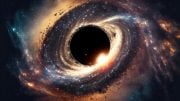

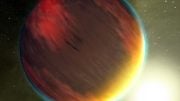
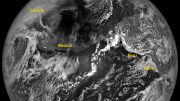
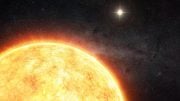
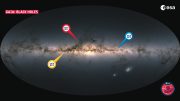
Sagittarius A* is 4.3 million solar masses so I’m wondering if this article is a big translation error?
I guess black hole doesn’t equal supermassive black hole? I was confused as well
Einstein is given credit in the article of the prediction of black holes, however the truth is Wheeler is the first person who theorised black holes and actuality Einstein denied them based on his formulation.
How’s that blackhole called a monumental discovery and not a colossal one?
Yes, the words missing from the article are “stellar-origin”. It is the largest known stellar-origin black hole in the galaxy.
33 is nothing. TON 618 is billions of times bigger. How is this even news??
Ton isnt in our galaxy but Sagittarius is so your point is right even if the example is wrong
Heavy??? How would one define how “heavy” a black hole would be?
You could calc the g-forces at the event horizon… but how would you determine the “weight” of a black hole? Relative to what other mass?
Well it obviously isn’t the largest, seeing as there’s a supermassive one at the centre. Why report it in such a daft way
Agree with Nobody, the stellar origin of this black hole should be differentiated from supermassive black hole SagA*.
I was curious as to the mass (and estimated age) of the companion star. Obviously, the black hole was born not long after a star massive enough to have created a 33m black hole formed.
What would happen if you were able to go into a black hole? Is it,just space?
Current theory holds that a black hole is a place of infinite mass and infinite density, where the laws of physics get really squirrely. I won’t pretend that I know for sure what it’s like in there, no one does. After all, not even light can escape it.
It is a great pity that these idiots who waste Tax Dollars looking into holes with a Microscope would not fall into one of them!
Ummm,so you think the pursuit of knowledge is a folly? That mankind’s inate desire to always push to see what’s over the next horizon is simply wasted time & energy? If that is indeed your belief, then cool – you’re certainly entitled to it. But I urge you to consider that if your credo was humanity’s prevailing sentiment, then what would our lives be like today? If we were lucky and hadn’t been rendered extinct due to famine, disease, or some other apocalypse, then our Luddite selves would probably be living in caves, hoping to survive the night and live another day of our comparatively short and meager lives.
Ho!!